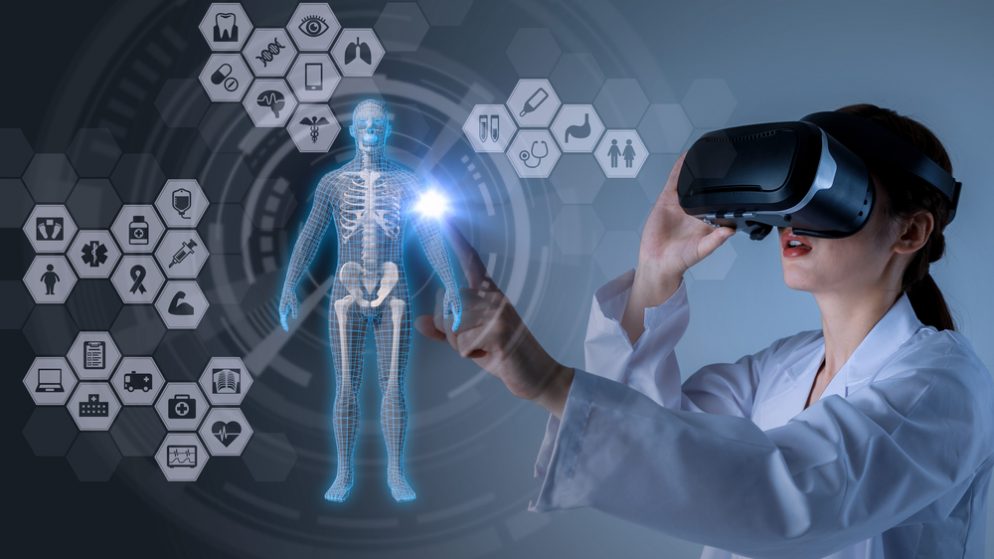



Get new exclusive access to healthcare business reports & breaking news




A person can get plenty of benefits from visiting your dental clinic. For one, you can assess if there are oral health issues that the patient may not have noticed at home. Various dental problems don’t become evident or cause pain until they worsen. These issues can include gum disease, cavities, and oral cancer.
Patients can prevent further dental issues when they see a dentist regularly. They must become proactive and visit you frequently for their oral health. This is so you can identify the sign of disease at its early stages to limit further issues.
Fortunately, advancements in various dental equipment, such as in modern clinics like Altima Thornhill Dental Centre, can help you more effectively treat and identify potential oral health issues from patients.
VR is a technology that enables users to interact with objects and other people in a 3-dimensional (3D) virtual environment. This happens through VR goggles and other mobile devices. That said, VR makes interaction look real. The virtual environment can also imitate the physical world that no other technology can make possible.
VR was first discovered in 1987 by Jaron Lanier, who founded the visual programming lab (VPL). Through his company VPL research, Jaron created some VR gear, such as a head-mounted display (HMD) and data glove. The company was the first to sell virtual reality goggles and gloves, which was significant progress in the VR haptics field.
In 2022, news and studies showed that VR had been used in various medical practices and settings. Physical therapists find VR helpful in assisting patients who are recovering from a stroke, particularly in relearning day-to-day activities. Medical professionals also find VR helpful in analyzing the various nerves in the human body.
With that said, it’s no wonder why VR technology can also be applied to oral health. If you’re wondering how VR can change your dental practice, read below to know more.
Now that you have learned what VR is, it’s time to learn how this technology can aid your dental practice. Knowing its uses can be ideal as it can help you decide whether investing in VR dental equipment is worth it. That said, here are three examples of those uses that you should remember:
Many patients can experience dental anxiety. Many factors can cause this. It could be because the patient is generally anxious about health matters or has not seen a dentist for a long time. Some patients might feel mild symptoms such as sweating and palpitations, but some could have a full-on panic attack.
Dental anxiety is a common occurrence that can make life harder for patients, so your clinic must be prepared to handle these cases. Fortunately, VR technology is believed to help with these situations.
VR can put visual and auditory stimuli away from the patient during the entire dental procedure. With the help of VR, the person can be immersed in another virtual setting, such as the beach. Having guided mindful meditations can also be possible through this technology.
Such a feature can be helpful as it will relax and calm the person. As such, the patient will feel less anxious and may even later enjoy returning to your clinic for follow-up procedures.
Even though you are now a professional and licensed dentist, certain procedures and treatments are not commonly sought by patients. And when a patient does need one, you might need a refresher to ensure you can perform the procedure effectively. Fortunately, VR can be beneficial in this regard.
VR training can help immerse dentists in an environment that imitates real-life scenarios and simulates work challenges. Because of this, VR training simulators allow dentists to enhance precision skills, which can require hand coordination and dexterity.
Young children who are still not used to seeing doctors and dentists can get anxious when visiting clinics. Unlike most adults who can sometimes manage their anxiety, kids don’t have that kind of self-control yet. Hence, you can always expect tears and tantrums from scared and anxious kids whose parents want the best for them.
But if there’s anyone who can get excited by colorful backgrounds and smiling characters, that would be children. As mentioned earlier, adults might need to take their minds off the dental procedure they are in, and immersing them in a relaxing and calm beach VR setting can help. On the other hand, kids can be more at ease when they see friendly cartoons and colorful environments.
Instead of feeling scared, they’ll have a fun experience in your clinic because of the VR feature. However, you must select appropriate content because some characters might make kids so excitable that it might be difficult to perform the dental procedure they need safely.
VR technology can instantly modernize your dental practice. Not many clinics are investing in state-of-the-art technology or equipment, and you can set your practice apart by being one of the first in your area to do so. Patients are also willing to pay more since the high-tech dental services you offer will justify the fees.
VR technology has been applied to many industries, and the dental field is one of them. Having VR equipment in your dental clinic can change your practice in many ways. Primarily, it will help your patients—both young and old—to deal with anxiety. It will be instrumental in making them feel at ease while they go through check-ups and procedures in your clinic.
Moreover, it can also help you review highly specialized procedures to provide better care and services to your patients. This is possible because VR technologies can simulate real-life situations that mimic the steps and outcomes of a dental procedure. This VR training can be done in a safe environment, thus allowing you to enrich your skills.
VR technology can upgrade your dental clinic to a modern, state-of-the-art facility. As such, you can collect higher fees than other clinics.